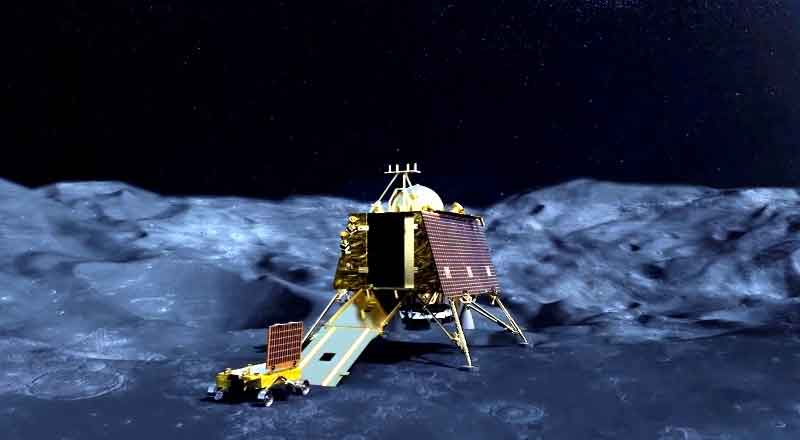- Chandrayaan 3’s lander Vikram shared the latest images of the moon after completing a maneuver that took it closer to its destination.
- The LI Camera -1 also captured images of the Harkhebi J crater, which has a diameter of approximately 43 km.
- The lander will attempt a “soft landing” on the south polar region of the moon on August 23, while the propulsion module will continue to orbit around the moon and study the Earth’s atmosphere.
- On the other hand, Luna-25, Russia’s first lunar lander in nearly 47 years, sent the first images a distance of about 310,000 kilometers away from the planet, as updated by Roscosmos.
India’s space agency ISRO shared stunning images taken by the Lander Imager (LI) Camera-1, on X, formerly known as Twitter. The montage of images shows different craters of the moon, one of which is the Giordano Bruno crater, one of the youngest large craters on the moon.
The LI Camera -1 also captured images of the Harkhebi J crater, which has a diameter of approximately 43 km. The pictures were taken after the lander successfully detached from the spacecraft’s propulsion module yesterday.
“Thanks for the ride, mate,” ISRO tweeted, imagining a conversation between the lander module and the spacecraft. The module is set to descend to a lower orbital after a deboosting or slowing down, which will bring it closer to the moon. The process places the Lander Module in an orbit where Perilune (closest point to the Moon) is 30 kilometers and Apolune (farthest point from the Moon) is 100 km.
The lander will attempt a “soft landing” on the south polar region of the moon on August 23, while the propulsion module will continue to orbit around the moon and study the Earth’s atmosphere. It will also accumulate signatures of exoplanets that would qualify for our habitability.
After the lander touches down and the lunar dust settles, ‘The Pragyaan rover will roll down from the Vikram Lander. Then the lander will take images of the rover and vice-versa. Following the moon landing, the rover will collect data on the composition and geology of the surface of the moon, paving the way for wide-ranging research.
In the other hand, Luna-25, Russia’s first lunar lander in nearly 47 years, launched atop a Soyuz rocket from the Vostochny Cosmodrome on Friday. Russian space agency Roscosmos on Monday released the first images sent back by the spacecraft.
The last Moon mission from Russia was Luna-24, which was launched in 1976 when the country was part of the Soviet Union. The Luna-24 mission returned around 170 grams of lunar samples. Luna-25 took these new images on Sunday, August 13 and the space agency released them on Monday.
The images were taken at a distance of about 310,000 kilometers away from the planet, according to a Telegram update by Roscosmos.
(With inputs from agencies)





